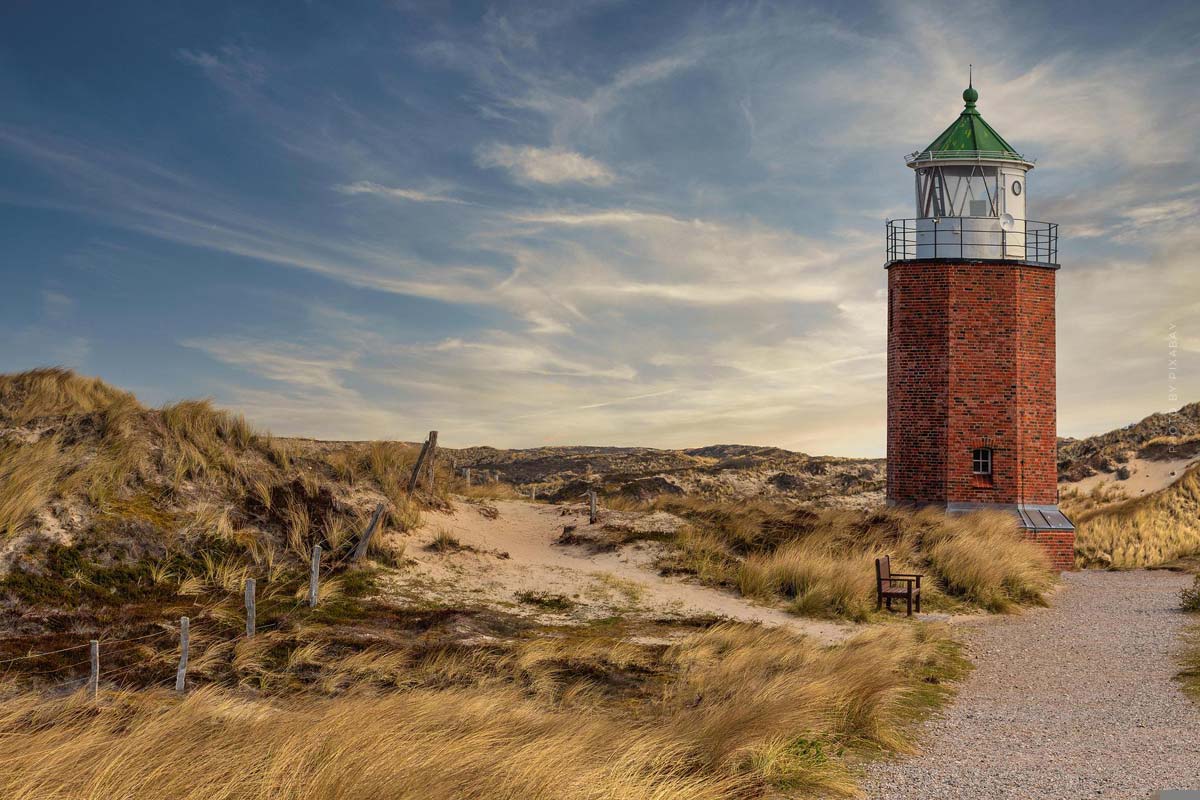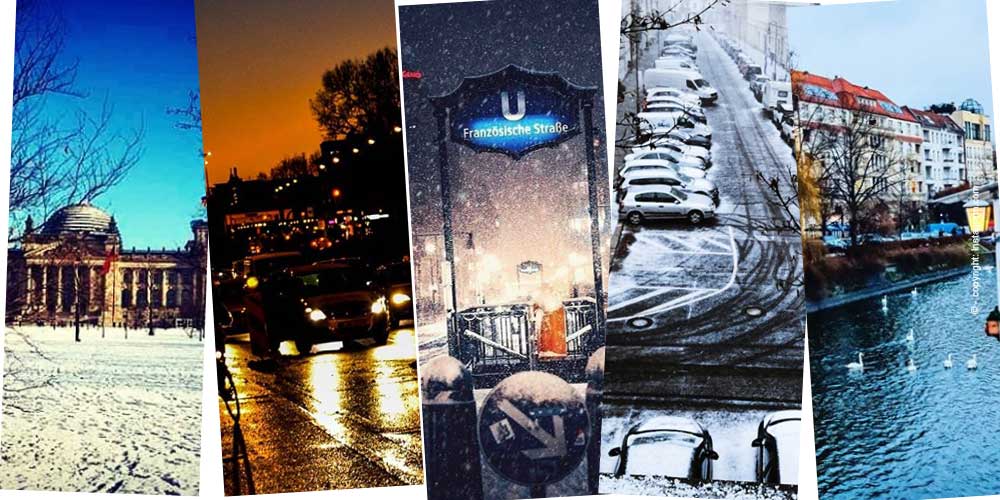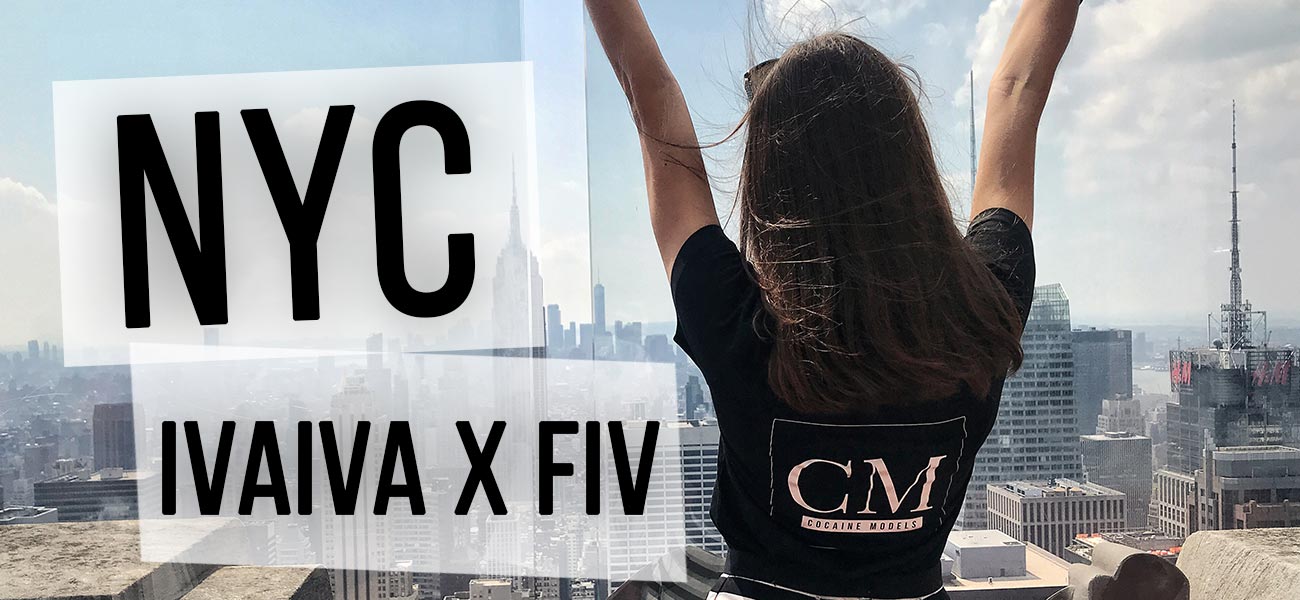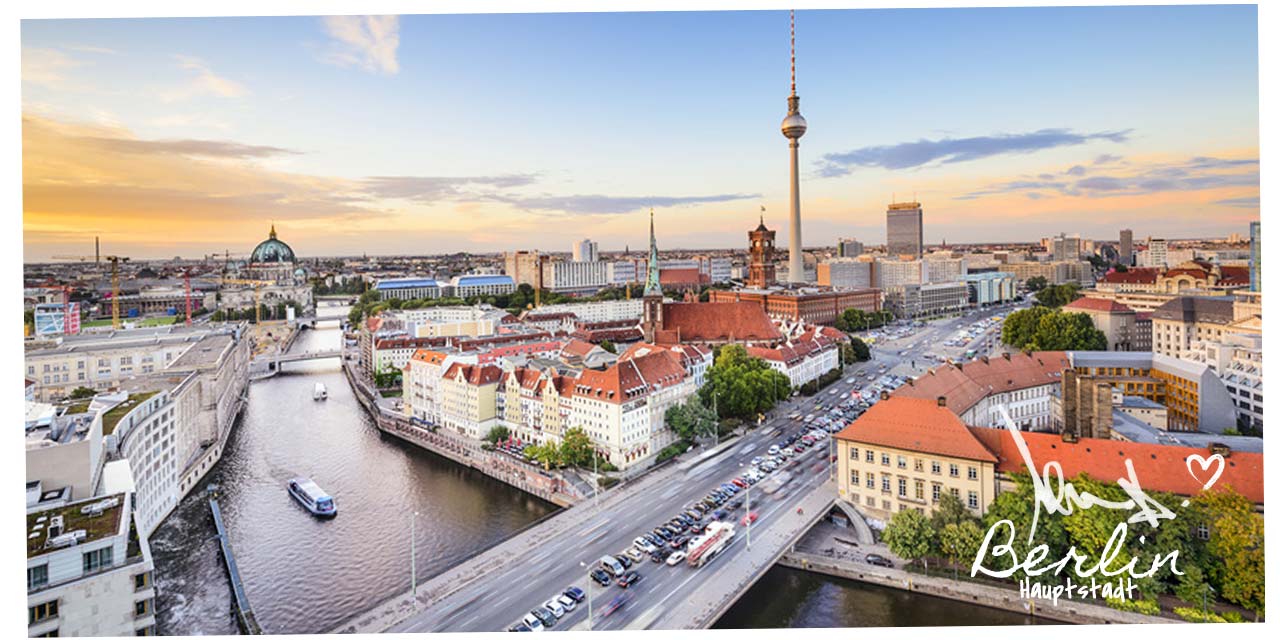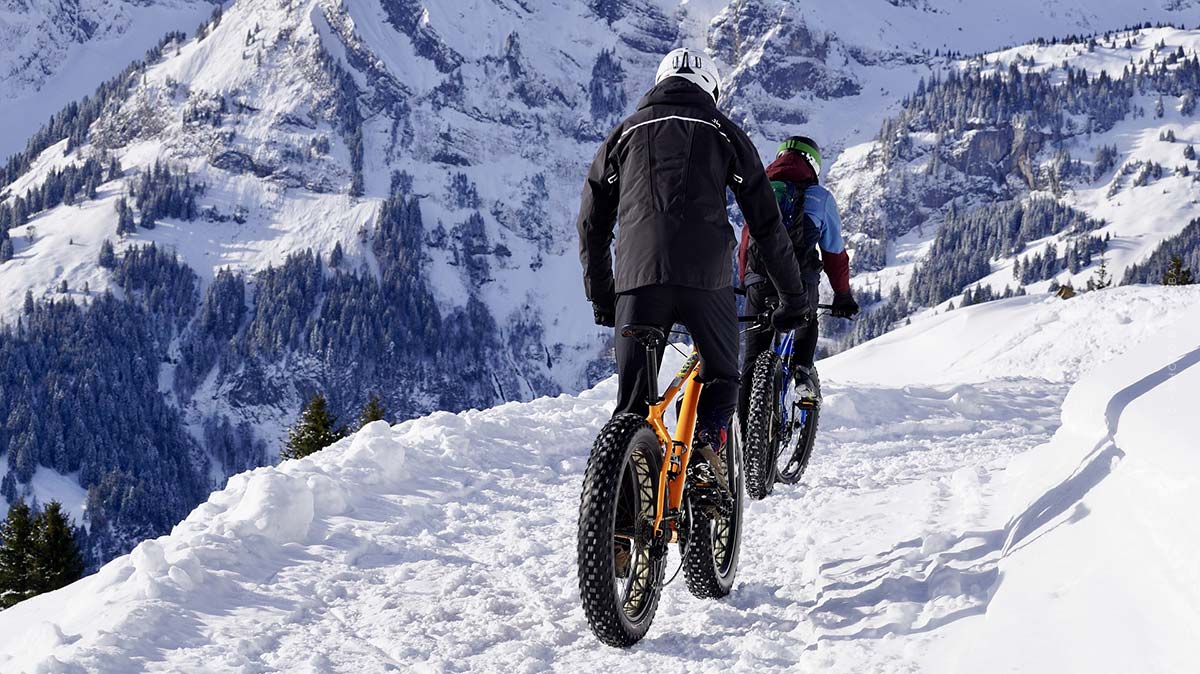Holidays in Berlin: Sightseeing, Berlin Specialties & Accommodations
Holiday Berlin – For the weekend or an extended week in summer, Berlin is always worth a trip. Millions of tourists come to the city every year and enjoy the party life, the city centre, but also the very individual districts and their very own charm. Here you will find everything you need for your next visit to Berlin. Sights, tips for the most popular districts and of course the best food! Berlin has many highlights. As the capital city it stands not only for international tourists, but also for concerts and events. There is the Fashion Week, but also worldwide popular photo motives like the East Side Gallery. Here you can find Berlin originals, artists from all over the world, actors and of course hipsters.
Travel to Berlin: Mini Tour through Berlin
The capital of Germany with 3.7 million inhabitants is a breathtaking city in every respect. Whether shopping on the Kurfürstendamm, sightseeing at the Brandenburg Gate or on the trail of history in the many museums in Berlin. Its historical value is also unsurpassable. The Holocaust Memorial commemorates the millions of Jews who died in the Reichskristallnacht, concentration camps and in general during the Second World War. Checkpoint Charlie represents the Cold War, the scene of the tank confrontation.
With its individual paintings, the East Side Gallery tells its own stories and ongoing concerns. Berlin really has everything! And what do you do when you get really hungry? Try a typical curry sausage at the snack bar on the corner. Not for nothing has Berlin set a record with 70 million people who eat a Currywurst there every year.
The most popular districts of Berlin are currently
- Central Berlin
- Prenzlauer Berg
- Kreuzberg
- Friedrichshain
- Neukölln
Berlin Center: millions of tourists
On arrival in Berlin, you will surely find yourself in Berlin Mitte. Because the central station is located here and most of the routes from the airports lead here. In Berlin Mitte, as in any international metropolis, you can do excellent shopping. From the KaDeWe to the Mall Of Berlin, luxury and souvenirs can be found on every corner. And what should not be missing: of course the Currywurst!
I’ll take you on a short tour through Berlin Mitte, but before that I’ll give you a quick look at the most popular districts outside Mitte. Prenzlauer Berg, Kreuzberg, Friedrichshain and Neukölln
Prenzlauer Berg, Kreuzberg, Friedrichshain and Neukölln: Real Life
If you want to experience the real Berlin, then you shouldn’t necessarily waste your time in Berlin Mitte, but explore the surrounding districts. Your Berlin Bucket List should definitely include Prenzlauer Berg, but also the neighbouring Friedrichshain, as well as Kreuzberg and Neukölln. Tip! Schöneberg also has cosy corners that are great for chilling out.
Here you see the S-Bahn to Warschauer Straßer, one of the most popular corners in Berlin and the transition from Friedrichshain to Kreuzberg.
Weekend trip and short holiday
Very often people go on weekend trips or short holidays when they want to visit Berlin. But how do you manage to visit an 891.8 km² city completely within a few days. Additionally, the geographical location of the individual sightseeings is rather inconvenient. There, it is not easy to decide for the best. Berlin is not only a city of culture, but also has a lot of memorials, memorials and museums to offer, especially in terms of history.
Especially on the first day you can feel lost in Berlin. Therefore, the first thing to do is to explore the surroundings.
Day 1: History, architecture and Reichstag building
You can literally feel the history at places like Checkpoint Charlie, which at that time served as a border crossing from West to East Berlin. A big poster with an officer in uniform hangs next to disguised soldiers with American flags. In October 1961 American and Soviet tanks with live ammunition faced each other. Within a month, the border crossing became the scene of the tank confrontation for members of the American, British and French armed forces before their journey to East Berlin.
During their visit, the Reichstag building and the Brandenburg Gate must not be missed. With a lot of luck they run into Angela Merkel, but it is worth it just for the impressive view from the glass dome. From there you have a wide, wonderful view over the whole of Berlin. The Brandenburg Gate catches the eye from above. With its impressive height of 26 metres, the 200-year-old building is more than just a sight to see. It is the city’s landmark and the symbol of reunification.
- Checkpoint Charlie
- Reichstag building
- Brandenburg Gate
Day 2: East Side Gallery – The Wall, art and Instagram motif
For the art-loving tourists, the East Side Gallery is of course recommendable. 1.3 kilometres full of art and history. After the fall of the wall 118 artists from 21 countries painted the East Side Gallery. “My God, help me to survive this deadly love” – Dimitrji Vrubel’s brother kiss is still the most famous painting on the wall today. On several postcards, souvenirs or magnets you can find the motive of Leonid Brezhnev and Erich Honecker. That is why it was decided in 1991 to put the wall under monument protection and today old paintings are only restored to keep the history alive.
- East Side Gallery
Checklist for the most important places for tourists
You have a little more than a weekend to explore the city? Then you should definitely know more of the top sights in Berlin. Everybody knows the Brandenburg and Alexanderplatz of course, but have you ever thought about a visitor to the Museum Island or how about shopping in the luxury boutiques on the Kurfürstendamm?
Here you can find more sights in Berlin:
- Brandenburg Gate
- Checkpoint Charlie
- Alexanderplatz
- Holocaust Memorial
- Television Tower Berlin
- Reichstag
- East Side Gallery
- Potsdamer square
- Berlin Cathedral
- Museum Island
- Kurfürstendamm
- Charlottenburg Palace
Map: Berlin
The German capital with over 3 million inhabitants – Here you can get lost quickly on your first, second and even third visit. To give you a little insight, here is a map of Berlin.
Accommodations: Hotel, apartment and camping
A suitable accommodation is essential. Many tourists are unsure which accommodation suits them. Berlin as a metropolis has many hotels, hostels and motels. Directly in the city centre, close to the sights, shopping on Kurfürstendamm or close to Alexanderplatz, so that you can go out in the evening. Why should you decide to go camping ? Quite simply! For a longer stay with family it is worthwhile to stay near the Wannsee. Do you expect 30 degrees in summer? There you will find cooling, beach and fun at the same time.
We have searched for you the advantages and disadvantages of camping and hotel together:
Luxury hotel, hotel or holiday apartment
Are you looking for a bargain offer with your best friend ? A weekend trip by bus and train – then hotels and hostels are especially good. Hostels are the perfect accommodation for backpackers, adventurous and spontaneous people.
Sweetly decorated hostels with delicious breakfast for a reasonable price and all this in the city centre. Berlin has plenty of them! Of course, for those who don’t want to miss out on luxury and comfort there is everything from luxury hotels to hotels with 3, 2, and 1 star(s).
5 star hotels have a concierge and bellboys, doormen or parking service for the car. Multilingual receptionists are there for you around the clock. Not to forget: 24-hour room service for food and drinks as well as an evening turndown service where the room is tidied up again and prepared for the night. The standard 3-star hotels still meet the highest demands. They are equipped with a dressing mirror and suitcase rack, sewing kit and shoeshine utensils are available, washing and ironing of guests’ clothes is possible.
Advantage:
- No stress when booking your holiday
- Transfer to the hotel included in the price
- Completely cared for by the staff
- Ideal for cooking muffle
- The cleaning is done by others
Cons:
- Significantly higher price
- Extra payments for internet, parking, etc.
- fixed location, no spontaneity
- Mostly no washing, cooking etc. possible
Camping at Wannsee
Berlin has more to offer than an ordinary city trip with sights, hotels and the currywurst stall next door. Berlin and its surroundings have beautiful natural sites, wide lakes and the perfect campsite just for you. Have a campfire with friends while watching the sunset. Camping sites should not be underestimated, with new sanitary facilities, most campsites are almost on hotel level. In the summer months the beer garden is open and there is a playground for the children. In addition, you can reach a bus stop in 5 minutes on foot and can thus visit the sights of the city in a roundabout way.
Advantages:
- In the middle of nature
- cheaper alternative to hotel
- More comfortable for children and four-legged friends (nobody complains about the volume)
- Freedom: not bound by time and place
- greater social interaction with other families, campers
Cons:
- Toilets and showers
- Vermin
- no 100% relaxation like in a hotel; shopping, cooking, washing under more difficult conditions
- very popular camping sites: crowded, not quiet, annoying neighbours
Dinner in Berlin
Most people arrive in Berlin very hungry after a long train journey or after a flight. What are the local specialities that you definitely have to try and can also quickly snack at the station or airport? Here are the top 3 Berlin originals.
Specialities: Currywurst, pancakes and knuckle of pork
Curry sausage, pickled knuckle of pork with herb puree, sauerkraut – Berlin cuisine takes some getting used to, and is sometimes super popular in other parts of Germany. The Wessis love their “Berliner” or “Krapfen”, but whoever orders a Berliner from the baker is looked at with great amazement or horror. Cannibalism? No, the famous Berliner with jam filling and icing sugar is called “pancakes” here. If you are looking for traditional pancakes, you will find them under the name “pancakes”. Eisbein is a softly cooked pork rind, traditionally served with pea purée and sauerkraut. This Berlin regular dish is mainly found in Old Berlin restaurants.
Berlin – The birthplace of the Currywurst
Let’s get to the highlight of Berlin cuisine – the Currywurst. No other topic stimulates discussions between West and East as much as the question of the invention of the Currywurst. In Uwe Timm’s novella “Die Entdeckung der Currywurst” (The Discovery of the Curry Sausage), the subject is a fictional person who is said to have served the first Currywurst at the Großneumarkt in Hamburg in 1947. The fictitious person Lena Brücker became the deputy of the numerous snack bar women who contributed a large part to the reconstruction in the post-war period.
Nevertheless, the Berliners insist that Herta Heuwer offered fried boiled sausage with a sauce made of tomato paste, curry powder, Worcestershire sauce and other ingredients at her snack stand on the corner of Kant-/Kaiser-Friedrich-Straße in Berlin-Charlottenburg on September 4, 1949. It was not until 10 years later, on 21 January 1959, that she patented her special sauce mixture under the name “Chillup”. Today a commemorative plaque in honour of Herta can be found on Kaiser-Friedrich-Straße in Berlin-Charlottenburg.
For those who still haven’t had enough of the delicious Currywurst, a trip to the Currywurst Museum (address and directions: Schützenstraße 70, 10117 Berlin) is a must!
Food Guide! You must not miss this
Weather: Berlin
The capital of Germany lies in a moderate transition zone between maritime and continental. Berlin is one of the warmest cities in Germany with an average annual temperature of 13.1 degrees. In summer, the highest average temperature is 23 degrees Celsius, which also ensures pleasant nights at night.
Q&A: Berlin
There are a lot of questions that need to be answered before a planned trip to the desired holiday destination. “Where is the city located?” or “How many districts are there?” are important elements in planning. Here are the answers to the most frequently asked questions:
Why did Berlin become the capital?
The capital of Germany has been Berlin again for 25 years – the country’s largest city. Before that it was a bit complicated . . . Also because Berlin was the capital for a long time before the division of Germany. In 1999 the parliament and government moved from Bonn to Berlin.
Why is it called Berlin?
The place in the swamp- Like many typical names from East Germany, Berlin has its origin in the Slavic language, more precisely in Old Polish. Accordingly, the name Berlin is composed of the word “brl” for swamp or morass and the suffix “in”, which is typical for place names. Berlin is therefore the place in the swamp according to the name.
How many districts are there in Berlin?
Berlin’s current administrative structure has existed since 1 January 2001, when an administrative reform divided Berlin into twelve districts, which have the function of administrative districts and form the lower part of the two-tier public administration.
Where is it dangerous in Berlin?
The police currently classify nine places as crime-ridden: Alexanderplatz, Leopoldplatz, Schöneberg-Nord (in the area of Nollendorfplatz and parts of the Regenbogenkiez), Görlitzer Park, Warschauer Brücke, Kottbusser Tor (see below), parts of Hermannstraße, Hermannplatz and a small area of Rigaer Straße.
What was Berlin called in the past?
One of them, named Cölln, was first mentioned in a document in 1237; this year is considered the year the town was founded. The other settlement gave the town its name in the long term: Berlin. The first documentary entry: 1244.
When was the city of Berlin founded?
The foundation of the city of Berlin- In 1237 Cölln on the Spree was founded. 7 years later, on 26 January 1244, Berlin is mentioned for the first time in a document. In 1307, these two cities are united; therefore, the date of foundation of Berlin is considered to be October 28, 1237.
What are the names of the two rivers in Berlin?
There are also some rivers in Berlin. The most famous river is probably the Spree, which flows through Berlin’s centre. But also the Havel with the Pfaueninsel and the Dahme can surely classify many as Berlin rivers.
Why was Berlin separated?
Berlin was henceforth divided into East Berlin and West Berlin, because many citizens in the GDR were dissatisfied with the way the government was run if they wanted to move to West Germany. To prevent them from doing so, the politicians of the GDR decided to build the Berlin Wall from 1961.


